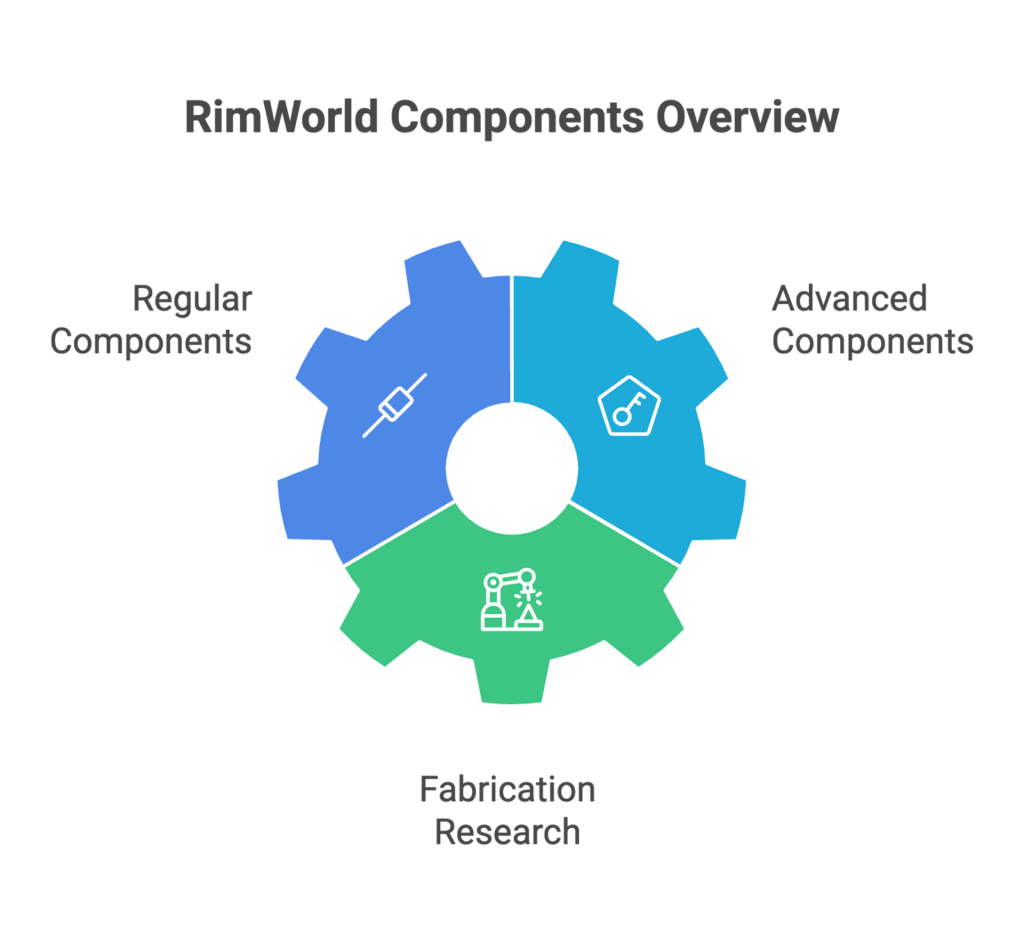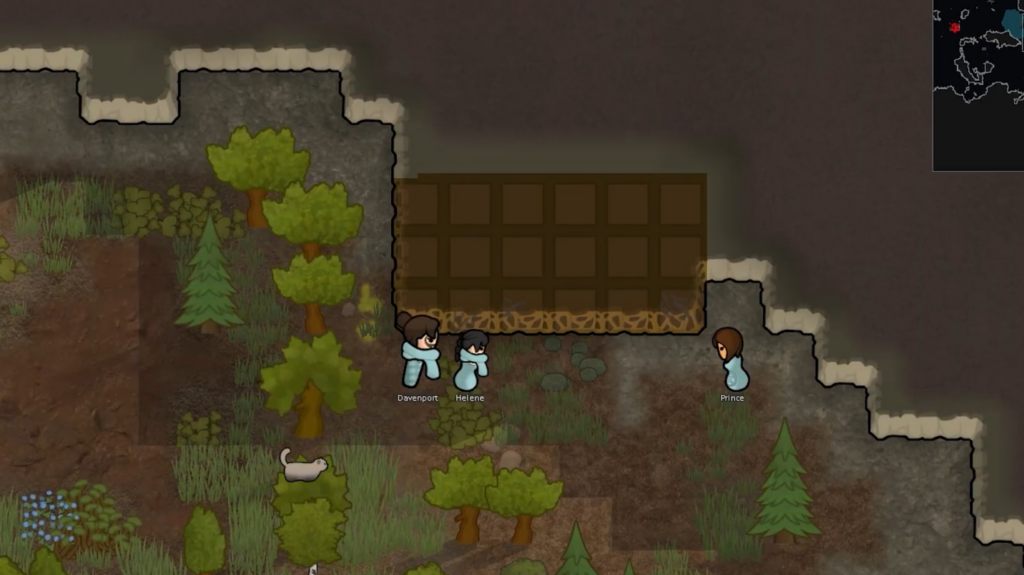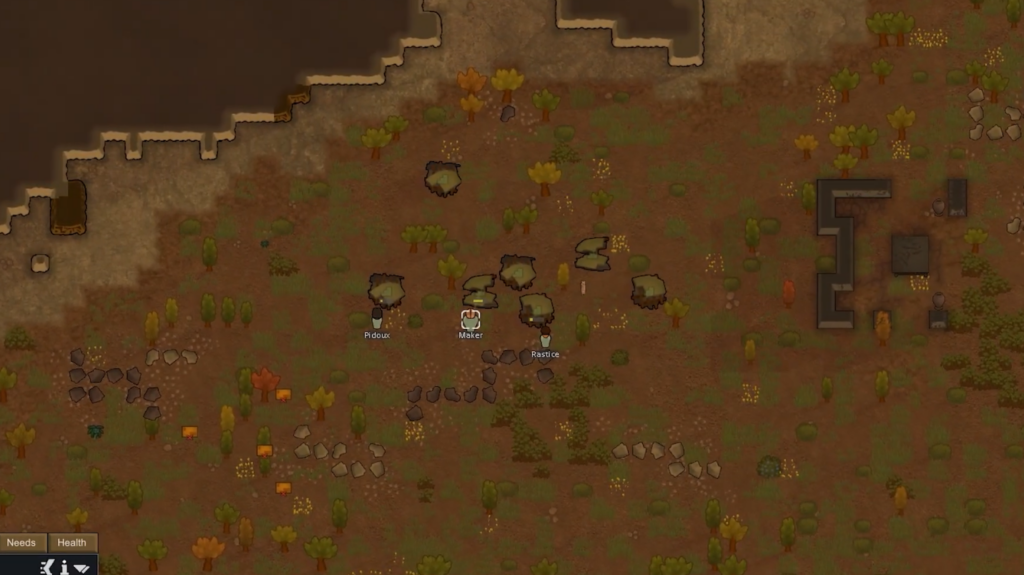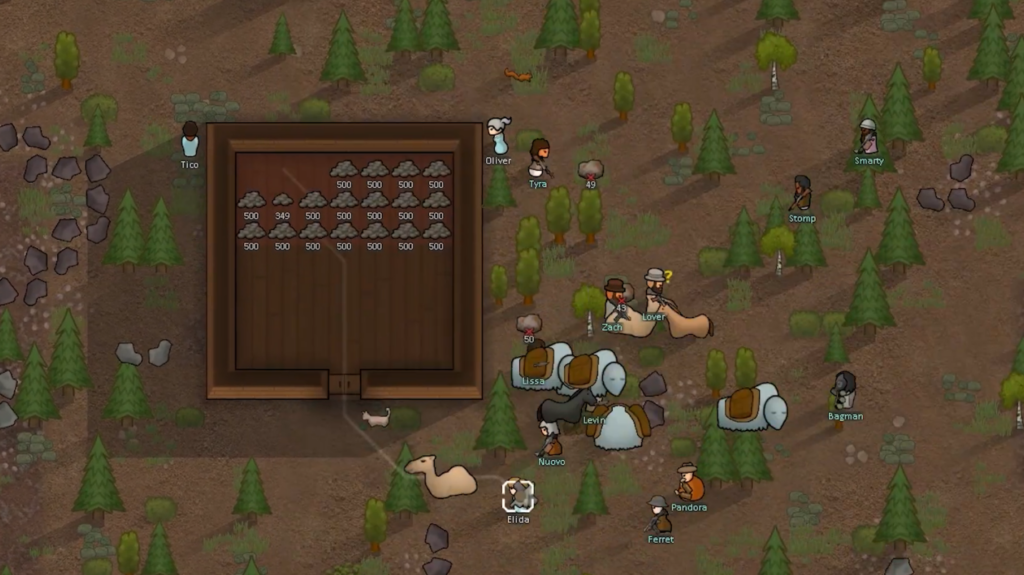RimWorld Components: Mastering Resource Management for Survival

Managing resources in a sandbox colony sim isn’t always about building walls and surviving raids. RimWorld components lie the hidden gears of everything from simple generators to high‑tech workbenches. When I first crashed on that lonely rim world, I learned the hard way that running out of components can be just as dangerous as a pirate raid. This guide will show you what components are, how to get them, and how to use them wisely so your colony can thrive.

Jump to:
Understanding RimWorld Components: The Basics
Components are small machines that connect wires, circuits, and sensors to form the backbone of your colony’s technology. You need them to build and repair most electrical devices, weapons, and workbenches. A single component weighs just over half a kilo and stacks in piles of fifty, but their value far exceeds their size. I learned early on that keeping a few on hand can be the difference between a powered base and a cold, dark night.
There are two types to worry about: regular (industrial) components and advanced components. The regular ones power basic electronics like batteries or turrets, while the advanced parts unlock endgame tools such as marine armor or spaceship reactors. Both types are finite until you research Fabrication, so using them wisely keeps your colony running smoothly.
Acquiring RimWorld Components
Unlike some resources that grow on trees or can be farmed, RimWorld components require a more hands‑on approach. You can gather them through four main methods: mining compacted machinery, crafting at a fabrication bench, salvaging ship chunks, and trading. Rotating between these sources prevents sudden shortages.
- Mining compacted machinery: Look for brown veins in rock; each tile yields two components but takes time to mine. When local veins are gone, use deep drills and scanners to uncover hidden deposits and maintain a steady supply.

- Crafting at the fabrication bench: Once you research the right technologies, build a fabrication bench and assign a skilled crafter. Each component costs twelve steel and takes a little over a minute of work, so ensure you have a good steel supply and enough power to support your drills.
- Salvaging ship chunks: Occasionally, crashed ship parts appear on your map. Deconstruct them quickly for a handful of components and some steel. Bring protection, as wildlife or raiders may interrupt your salvage operation.

- Trading and caravans: Traders and outlander bases sell components and advanced parts, so stock up when you can. If you can’t afford them, form caravans to sell surplus goods and return with much‑needed components, but plan routes carefully to avoid danger.

For horror fans, our article on the best PC horror games may offer new titles to test your nerves, while the best survival games in 2025 will broaden your horizons. With the right knowledge and a bit of planning, your colony can turn a desolate planet into a thriving home.
Advanced Components and Late‑Game Crafting
To unlock late‑game technology, you’ll need advanced components. Research Advanced Fabrication, then craft them using one component, twenty steel, ten plasteel, and three gold at the fabrication bench. Because crafting is slow and expensive, buy advanced components from traders or accept quests that reward them when you can.
Managing Your Component Supply
Staying ahead of shortages takes planning and restraint. Here are three practices that help:
- Balance sources: Mine compacted machinery early, craft what you need mid‑game, and trade frequently. Diversifying prevents one method from running dry.
- Build only what’s necessary: Stick to essential devices. Turrets are great, but each one eats components you might need later. If fertile soil is plentiful, grow crops outdoors instead of building hydroponics basins.
- Keep a reserve: Always store a small pile of components and advanced components for emergencies. Devices break without warning, and you don’t want to lose power or heat during a cold snap or toxic fallout.
Personal Survival Stories and Tips
Component shortages create unforgettable stories. I’ve fought off raiders in total darkness after a conduit blew, patched up holes with scrap parts, and taken apart my own turret to keep the freezer running. Those hard lessons taught me to pack extra supplies, keep a toolbox near the fabrication bench, and always keep a few components in reserve. Even when I add horror mods that sprinkle in ghost rooms and hiding spots, the same rule applies: attention to detail and planning save lives.
Beyond these tales, there are plenty of small tricks that help your colony thrive. Leaving a trail of salt outside freezer doors can slow infestations in certain mods, much like sprinkling salt to ward off spirits in other games. When communicating with traders or new arrivals, I try to keep my tone calm and respectful; good communication builds trust and can lead to better trade deals.
I’ve had colonists joke about hearing most ghosts whisper when they harvest crops at night, but really, it’s just the wind and our frayed nerves. These lighthearted posts on my game diary remind me that RimWorld is as much about life as it is about death, and that little touches, like a cozy kitchen where we bake cookies or the careful placement of torches to improve sight, make a huge difference. Don’t be afraid to experiment with mods or settings; regardless of whether you’re defending your nearby colony from mechanoids or simply keeping your settlers warm, every decision teaches you something new about survival.
Keeping Your Colony Powered and Ready
If reading this inspired you to dive back into RimWorld or try it for the first time, consider picking up a copy from our marketplace. The game is available as a digital key, and our prices are often lower than those of other stores. You can check out the RimWorld Steam key or explore our curated list of games like RimWorld to find similar experiences.
FAQs
How do you get components in RimWorld?
To get components in RimWorld, you can mine compacted machinery, deconstruct ship chunks, craft them at a fabrication bench, or purchase them from traders. Each method has its own advantages: mining provides early‑game supplies, crafting ensures a renewable source once you research Fabrication, deconstructing crashed ship parts yields a quick burst of components and steel, and trading lets you convert excess goods into parts.
Can you craft components in RimWorld?
Yes, you can craft components in RimWorld by building a fabrication bench and assigning a colonist with at least level 8 crafting skill. Each component requires twelve steel and takes about 5,000 ticks to produce, so it’s wise to set up deep drills for steel production and prioritize crafting during downtime.
What are components used for in RimWorld?
Components are used for crafting and repairing most electrical items, weapons, and workbenches in RimWorld. They’re needed for batteries, research benches, automated turrets, generators, and many pieces of furniture; without them, your colony’s infrastructure will quickly fall apart.
Where can you find advanced components in RimWorld?
You can find advanced components in RimWorld by completing quests, buying them from outlanders and orbital traders, or crafting them after researching Advanced Fabrication. Crafting an advanced component requires one component, twenty steel, ten plasteel, three gold, and a colonist with high crafting skill.
How do you manage component scarcity in RimWorld?
To manage component scarcity in RimWorld, focus on diversifying your sources, stockpiling early finds, and avoiding unnecessary builds. Mining compacted machinery veins, setting up fabrication benches for crafting, keeping an eye out for crashed ship chunks, and trading with caravans will help you maintain a steady supply so your colony never grinds to a halt.
















